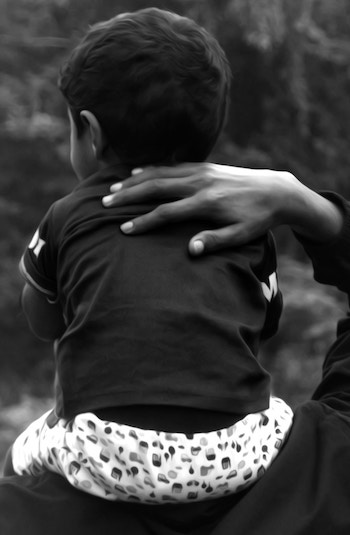Photo by Vishnu TB on Unsplash
unpolished thoughts 1/3/19
I will be eternally grateful for having discovered my body.
I always had one of course, and it always participated in my experiences of pleasure and pain, joy and sadness, excitement and irritation, and all the rest.
But I didn’t understand it’s role.
The fact that that my chest felt heavy and caved in for months as the result of a heartbreak, that the beauty of a sunset seemed to literally pierce me because it reminded me of my lost love’s fiery red hair – these sensations weren’t separated from the words that I knew to describe them.
Although I did certainly understand that there was a lot happening beyond what I could have explained with language – the language of words, that is.
The body does have a language, but it’s a foreign language for too many of us.
The sudden heat or cold we feel in response to different situations, feelings of heaviness or lightness, and so many other sensations – these are not abstractions, nor are they random.
The body has a deep intelligence and it speaks consistently. The challenge of translating its voice into words our minds will understand is that there is no universal dictionary we can consult.
That’s because each of our bodies found its voice through the pathways of our own personal histories. Like our native tongue, we learned from our parents first, then others, the difference between one thing and another, and we slowly developed a communication system through trial and error.
But with our body, it was never a question of hearing a sound like “mama” and learning how to do precisely the thing that would replicate it. Instead, our bodies have always been there to express our needs, beginning with the most basic ones such as our needs for nourishment, safety, and love.
Before we learned words we learned about hunger and satisfaction, safety and danger, neglect and affection. And we learned a feeling for each of these experiences.
Still, for so many of us, these feelings were never pure.
The sensations were mixed together or inconsistent in the ways that they appeared.
Just like a baby whose cradle is next to a wall and always turns its head and eyes in the same direction to see its mother coming into the room, we all developed our own individual patterns and biases in the language of our sensations.
By the time our bodies have digested decades of life experience, it’s likely that we know ourselves much better in many respects, but it’s also quite possible that our internal body language remains mostly a mystery.
Anxiety, for example, is a feeling in the body, a kind of ever-present irritation that never allows us to be completely at peace. There is always a sense that something is wrong.
But what is it?
Today I was reading about the differences between the kind of anxiety associated with potential danger or loss of security and the anxiety of being alone. These two kinds of anxiety look different in the brain and require two different things in order to be relieved.
How can we tell the difference?
The book I’m currently reading, Your Resonant Self by Sarah Peyton, is a wonderful resource for a question like this. (I mentioned it already in a previous post).
But here is one simple idea that you can begin with today: start an intentional dialogue with your body.
This means using your internal voice to ask your body specific questions, and then waiting to give it time to answer.
One very useful question is to ask your body about its needs. Your body may not answer with words, but it will certainly resonate differently depending on the question you ask.
For example:
Do you need acknowledgement for the difficulty of keeping up with so many tasks every day?
Do you need to be held and reassured that you are loved and cared about?
Do you need recognition for your creativity and your contributions?
These are just some of the questions you might ask your body about its needs. Even if these needs are unfulfilled right now, giving your body the experience of being acknowledged for the burdens that it carries makes a difference.
In general, when a question is clear, your body will have a “yes” or a “no” inside that you are likely to be able to understand.
Just as you can communicate in this simple way with a foreigner and then slowly build more understanding with hand gestures, facial expressions, and by teaching each other simple words, starting with yes/no questions is a place to begin.
Of course, our lives are complex and we all have places inside of ourselves where we are trying to say “yes” and “no” at the same time.
This experience was something Moshe Feldenkrais called “cross motivation” – when we are simultaneously attracted and repelled by a given experience. In these places, the answer our bodies give us to a yes/no question will be much muddier.
This is a signal that we need to ask a new question.
We might simply ask our body if it feels confused, and if it needs more clarity. Once again, we may not be able to provide that clarity immediately, but we can acknowledge our body’s experience and let it know we are listening.
We can also make an important promise to our body, the same promise that would be important to any child:
You are not alone. I will always be here for you. You can always talk to me. I will always listen.
If this sounds overly simple, that’s because it is. Because just like that child, what is most important to your body isn’t the promise you made it.
It’s whether you are committed to keeping it.
